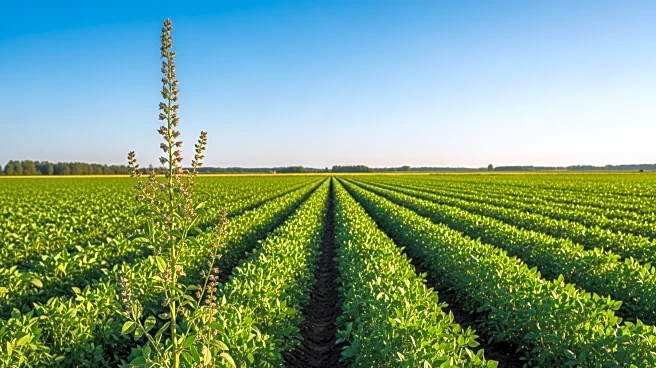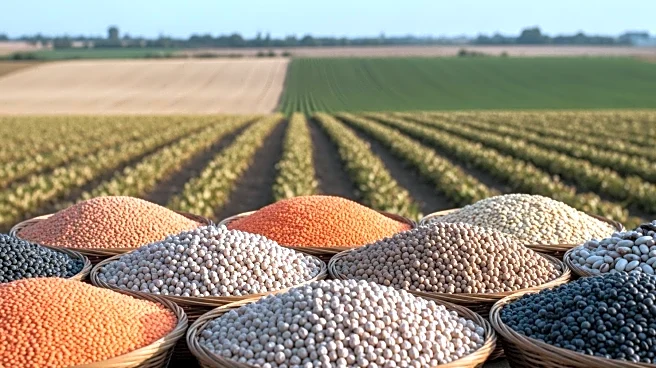What's Happening?
Prime Minister Narendra Modi has launched two major agricultural initiatives aimed at transforming 100 low-performing districts in India. The Pulses Atmanirbharta Mission and PM Dhan-Dhanya Krishi Yojana are designed to increase pulse cultivation by 35 lakh hectares and reduce India's dependency on pulse imports. With an allocation of over Rs 11,000 crore, these schemes aim to directly benefit around 2 crore pulse farmers by increasing the production of toor, urad, and masoor pulses. Modi emphasized the importance of local implementation and urged young officials to take responsibility for adapting the schemes to local soil and climate conditions.
Why It's Important?
These initiatives are significant as they aim to enhance India's agricultural self-reliance, particularly in pulse production, which is crucial for the country's protein supply. By reducing imports and increasing exports, the schemes could strengthen India's agricultural economy and improve the livelihoods of millions of farmers. The focus on pulses is particularly important for addressing nutritional needs, especially for those following vegetarian diets. The schemes also reflect a broader push towards Atmanirbhar Bharat, or self-reliant India, which is a key policy goal of the Modi administration.
What's Next?
The success of these initiatives will depend on effective local implementation, with district-level action plans tailored to specific needs. Young officials and farmers are expected to collaborate closely to ensure the schemes' success. The government will likely monitor progress and make adjustments as needed to achieve the desired outcomes. Additionally, there may be political reactions, particularly from opposition parties, regarding the allocation of resources and the focus on agricultural self-reliance.
Beyond the Headlines
The launch of these schemes also highlights the ongoing political discourse in India, with Modi criticizing previous Congress governments for inadequate support to agriculture. The emphasis on reducing costs for farming equipment through GST reforms reflects broader economic strategies to make agriculture more affordable and sustainable. These developments could lead to long-term shifts in India's agricultural policies and practices, potentially influencing global agricultural markets.











